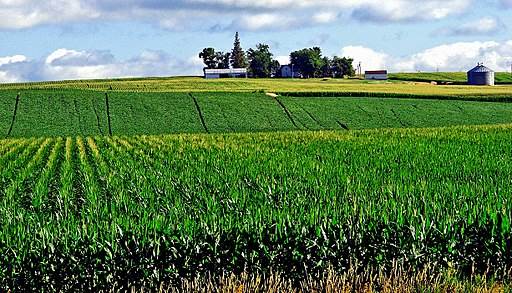(Note: The new book The Making of the Midwest: Essays on the Formation of Midwestern Identity, 1787-1900 includes an essay by ALPLM historian Dr. Jacob Friefeld. It’s entitled "Homesteading and the Making of the Midwest" and discusses ways in which the Homestead Act contributed to the development of the Midwest as a region. In this post, Friefeld touches on some of the issues scholars of the Midwest are studying.)
What is the Midwest? The answer seems simple: It’s that great center of the U.S., comprised of Ohio, Indiana, Michigan, Illinois, Wisconsin, Iowa, Minnesota, Missouri, Kansas, Nebraska and the Dakotas. But cross the 98th meridian in Kansas, Nebraska or the Dakotas and you’ll find people who dispute that definition, wondering if they aren’t quintessentially more western than midwestern, or perhaps even plains folk. These categories get even less defined as you look further back in time.
Kansas and Nebraska were the original Middle West. In the 1850s, Americans tried to grapple with those new territories and settled on Middle West because the territory sat between the Southwest of Oklahoma and Texas, and the Northwest of the Dakota Territory. That is, Americans understood the Midwest as a place west of the Mississippi but between North and South.
In the decades following the Civil War, as the United States expanded its territory farther west at the expense of American Indians, the Kansas-Nebraska definition of Midwest couldn’t hold. It became the great heartland between East and West, or, more pejoratively, the flyover country that in recent years has decided presidential elections to the chagrin of Democrats and Republicans, depending on the outcome. Even as the label “Midwest” suggests a unified whole, tensions exist within the region. These tensions aren’t primarily between North, South, East, or West, but between urban and rural.
 People may not agree on where to find the Midwest, but they generally agree on what you'll find there.
People may not agree on where to find the Midwest, but they generally agree on what you'll find there.
Cultural geographer James Shortridge argued in the 1980s that the perceptions about the Midwest remain pastoral—the idea of simplicity where one knows their neighbors and doesn’t have to look far for sprawling farmland. Still, that pastoral Midwest is juxtaposed against the region’s great cities. Does it play in Peoria or Chicago? Is your beer from Milwaukee or the Northwoods of Chippewa Falls? The very idea of Garrison Keillor’s Lake Wobegon, “the town that time forgot and the decades cannot improve,” contrasted against the Twin Cities embodies this central divide among Midwesterners that seems to mirror a central division in the nation itself.
Until recently, the Midwest had been what historian Jon Lauck termed a “lost region” — understudied despite its immense national importance. Lauck and others have endeavored to reduce this trend and encourage other scholars to do so as well. The most recent volume, Making of the Midwest: Essays on the Formation of Midwestern Identity, 1787-1900, adds to our understanding of how people in the nation’s heartland came to see themselves as Midwesterners. Perhaps the process of understanding divisions in America and how to bridge them begins with understanding the Midwest.
Jacob K. Friefeld is a Research Historian at the Abraham Lincoln Presidential Library and Museum. He was recently named an affiliate Fellow at the University of Nebraska Center for Great Plains Studies.